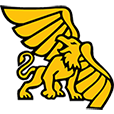

Procedure and Operating Requirements for Use of Unmanned Aircraft Systems, Including Drones and Model Aircraft
The use of unmanned aircraft systems (commonly referred to as drones), as well as other remotely operated model aircraft (together referred to as “UAS” or “UASs”) pose inherent risks to the health, security and privacy of the Missouri Western State University community and individuals in the surrounding community. Therefore, the recreational use of UAS is prohibited on all property owned or otherwise controlled by Missouri Western State University or during University sponsored events.
Faculty, staff, students and outside vendors seeking to use a UAS for official University purposes, on or off of the University’s campuses (e.g., research, instruction, marketing) must submit a Request Form for Unmanned Aircraft Systems (UAS) Use. Applicants must satisfy all Federal Aviation Administration (FAA) requirements regarding the operation of the UAS, including the necessary pilot certification prior to UAS use. Additional information is available at the FAA’s website at https://www.faa.gov/uas/. Requests for UAS use will be approved through the Risk Management, Environmental and Institutional Safety and the General Counsel, in consideration of federal and state law regarding the operation and regulation of UASs. Inherent risks in the operation of such equipment require additional insurance provisions and policy considerations. Insurance would have to be provided from homeowners’ insurance or the Academy of Model Aeronautics – with coverage of $1 million for injuries and $50,000 for invasion of privacy.
Persons violating this policy will be subject to discipline under University policies, and may be subject to criminal and civil penalties and liability under federal and state law. Area law enforcement and emergency management agencies are exempt from the application requirement for official law enforcement and emergency response efforts.
If a University unit arranges for a contractor or a third party to use a UAS for purposes associated with a University facility or event, the contractor must adhere to all campus policies and the contracting unit shall contact the Director of Risk Management, Environmental and Institutional Safety a minimum of 24 hours in advance of the flight to ensure that the UAS owner and operator have adequate liability insurance.
All uses of UAS must comply with following Operations Requirements set forth below.
Operations Requirements
- UAS must weigh less than 55 pounds; UAS and model aircraft that weigh over 55 pounds are strictly prohibited.
- UAS that weigh more than 0.55 pounds require FAA registration.
- In operating a UAS for purposes of monitoring, viewing, recording and/or transmitting visual images, operators must take all reasonable measures to avoid violations of areas normally considered private in accordance with accepted social norms, including but not limited to: restrooms, locker rooms, individual residential rooms or dwellings, changing or dressing rooms, and health treatment rooms.
- UAS shall not be used to monitor or record residential hallways, residential lounges, or any residential living space.
- UAS shall not be used to monitor or record sensitive institutional or personal information which may be found, for example, on an individual’s workspaces, on computers or other electronic displays.
- UAS shall not create a hazard to any University property, the University community or the public at any time.
- UAS may not be operated in a way that disrupts instruction or unduly affects the environment of people in or passing through a common space, those working or studying within a building, or those entering, exiting or otherwise making their way about a facility.
- UAS must be in visual line of sight of the remote pilot in command.
- UAS must be visible to the operator with no assistance other than corrective lenses.
- UAS may not fly over people.
- FAA regulations require drone pilots to be at least 25 feet from all property and bystanders, and drones cannot be flown within 500 feet of any person, vessel, vehicle or structure.
- UAS must yield right of way to other aircraft.
- UAS maximum speed 100 mph/87 knots.
- UAS maximum height of 400 feet.
- UAS minimum visibility 3 miles from point of control.
- A remote pilot in command may not command more than one UAS.
- A remote pilot in command may not operate a UAS from a moving aircraft.
- Reckless operation of a UAS is prohibited.
- A UAS may have no hazardous material on board.
- The remote pilot in command must inspect UAS prior to operation to ensure safe working order.
- The remote pilot in command may not operate a UAS if physical or mental condition prevents safe operation.
- A UAS may carry an object if it does not affect flight operations and the entire UAS with they object weighs less than 55 pounds.
- A UAS must be operated by an FAA approved remote pilot in command.
- The remote pilot in command must comply with all FAA requirements associated with the position.
- If UAS are being used to obtain photos, video or sound for commercial purposes, additional permission for any such work needs to be granted in writing from the University’s Marketing and Communications group at (816) 271-4200.
Sanctions
- Any violations of University policies by an individual will be dealt with in accordance with applicable University policies and procedures, which may include disciplinary actions up to and including termination from the University.
- Legal prohibitions regarding physical presence on campus/trespassing and other legal action may also be pursued against third parties that operate UAS in violation of this policy.
- Fines or damages incurred by individuals or units that do not comply with this policy and/or the UAS Operating Requirements will not be paid by the University and will be the individual and personal responsibility of those persons involved.



